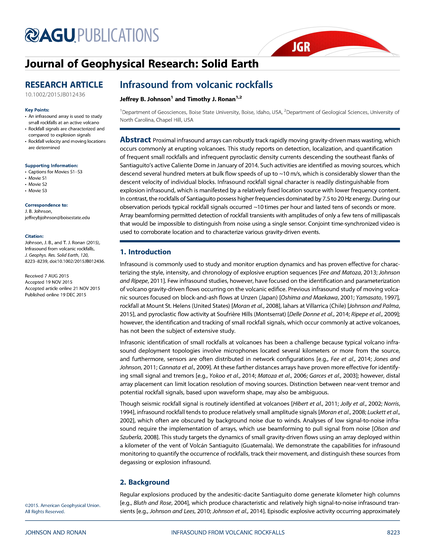
Proximal infrasound arrays can robustly track rapidly moving gravity-driven mass wasting, which occurs commonly at erupting volcanoes. This study reports on detection, localization, and quantification of frequent small rockfalls and infrequent pyroclastic density currents descending the southeast flanks of Santiaguito’s active Caliente Dome in January of 2014. Such activities are identified as moving sources, which descend several hundred meters at bulk flow speeds of up to ~10 m/s, which is considerably slower than the descent velocity of individual blocks. Infrasound rockfall signal character is readily distinguishable from explosion infrasound, which is manifested by a relatively fixed location source with lower frequency content. In contrast, the rockfalls of Santiaguito possess higher frequencies dominated by 7.5 to 20Hz energy. During our observation periods typical rockfall signals occurred ~10 times per hour and lasted tens of seconds or more. Array beamforming permitted detection of rockfall transients with amplitudes of only a few tens of millipascals that would be impossible to distinguish from noise using a single sensor. Conjoint time-synchronized video is used to corroborate location and to characterize various gravity-driven events.
This document was originally published in Journal of Geophysical Research: Solid Earth published by Wiley on behalf of the American Geophysical Union. Copyright restrictions may apply. doi: 10.1002/2015JB012436
Available at: http://works.bepress.com/jeffrey_johnson/24/
